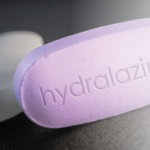
alphaspirit / shutterstock.com
New research on complement activation in anti-neutrophil cytoplasmic antibody (ANCA) associated vasculitis underscores its important role in the pathogenesis of this disease, an autoimmune condition defined by inflammation of small- and medium-caliber blood vessels.1 ANCA testing is commonly performed to help diagnose granulomatosis with polyangiitis and microscopic polyangiitis, both of which are forms of ANCA-associated vasculitis.
Two main types of ANCA-associated vasculitis exist: MPO-ANCA, defined by the presence of antibodies against myeloperoxidase, and PR3-ANCA, defined by the presence of antibodies against proteinase 3. These differ in genetic predisposition, pathophysiologic mechanism, cytokine profile, organ predilection and treatment response, which makes phenotyping important, says one of the study’s authors, Eveline Wu, MD, MSCR, an allergist/immunologist, pediatric rheumatologist and researcher at the University of North Carolina (UNC), Chapel Hill.
“We know complement is an important part of our innate immune system, defending against microbes or pathogens while ‘complementing’ other parts of the immune system,” Dr. Wu says. “It is a complex process, involving more than 30 proteins that act sequentially, creating a cascade.” Complement can be activated in three different ways, via the alternative, classical and lectin pathways, although for this condition the alternative pathway may be more important. The pathways converge at C3.
A Critical Role in ANCA
Historically, complement activation was not thought to have a significant role in ANCA-associated vasculitis, because there is typically little immunoglobulin or complement deposition at the site of tissue injury. An experimental mouse model of ANCA-associated vasculitis was developed at UNC, with injection of the anti-MPO antibody producing a vasculitis similar to microscopic polyangiitis.2 The investigators discovered that mice deficient in certain complement components were protected from developing the condition, which was the start of accumulating evidence showing complement activation is, in fact, critical in ANCA-associated vasculitis, as well as in certain other autoimmune conditions.3

Dr. Wu
“The primary objective of our study was to investigate complement activation in human MPO-ANCA and PR3-ANCA-associated vasculitis,” the authors note. A secondary objective was to determine whether FUTHAN, a broad-specificity protease inhibitor that blocks in vitro complement activation, could aid in more accurately measuring complement activation in patients with ANCA-associated vasculitis and healthy controls, given the risk for complement activation caused by sampling procedures.
Plasma from 98 patients with ANCA-associated vasculitis and 35 healthy controls was obtained and immediately frozen. ELISA measures and Wilcoxon two sample tests were conducted to compare plasma levels of circulating complement activation products among groups. Levels of C3a, C5a and sC5b-9 were found to be higher in active MPO-ANCA-associated vasculitis patients than in healthy controls, and C3a, C5a, sC5b-9 and C4d were higher in active PR3-ANCA-associated vasculitis patients than in healthy controls.

